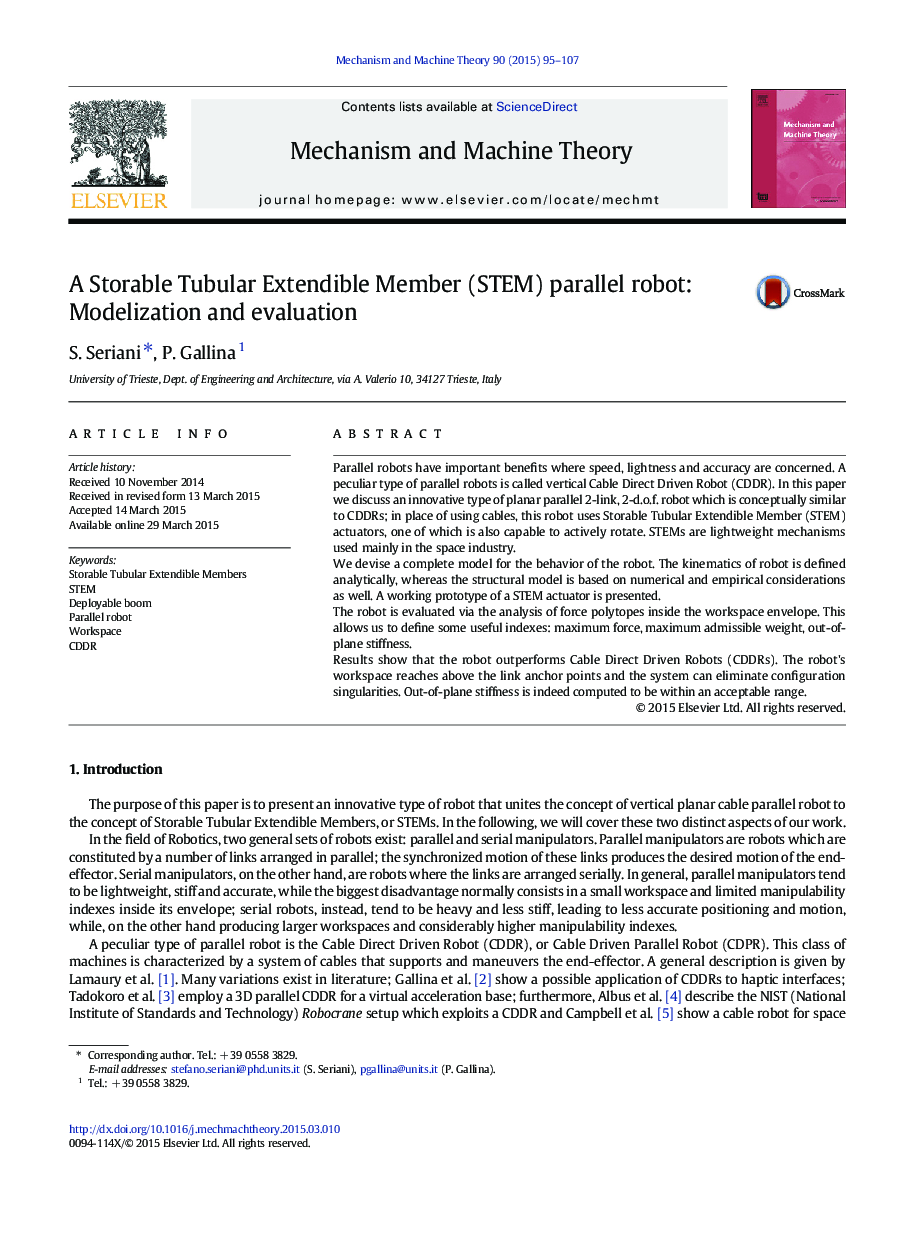| Article ID | Journal | Published Year | Pages | File Type |
|---|---|---|---|---|
| 802136 | Mechanism and Machine Theory | 2015 | 13 Pages |
•A parallel robot actuated by Storable Tubular Extendible Members (STEMs) is presented.•We produce a complete model for the robot, both kinematics and structural.•A prototype of a STEM actuator is built and used for experimental validation.•The robot is evaluated through force polytope analysis inside the workspace envelope.•We find that the STEM parallel robot outperforms similar robots (i.e. CDDRs).
Parallel robots have important benefits where speed, lightness and accuracy are concerned. A peculiar type of parallel robots is called vertical Cable Direct Driven Robot (CDDR). In this paper we discuss an innovative type of planar parallel 2-link, 2-d.o.f. robot which is conceptually similar to CDDRs; in place of using cables, this robot uses Storable Tubular Extendible Member (STEM) actuators, one of which is also capable to actively rotate. STEMs are lightweight mechanisms used mainly in the space industry.We devise a complete model for the behavior of the robot. The kinematics of robot is defined analytically, whereas the structural model is based on numerical and empirical considerations as well. A working prototype of a STEM actuator is presented.The robot is evaluated via the analysis of force polytopes inside the workspace envelope. This allows us to define some useful indexes: maximum force, maximum admissible weight, out-of-plane stiffness.Results show that the robot outperforms Cable Direct Driven Robots (CDDRs). The robot's workspace reaches above the link anchor points and the system can eliminate configuration singularities. Out-of-plane stiffness is indeed computed to be within an acceptable range.
Graphical abstractFigure optionsDownload full-size imageDownload as PowerPoint slide
